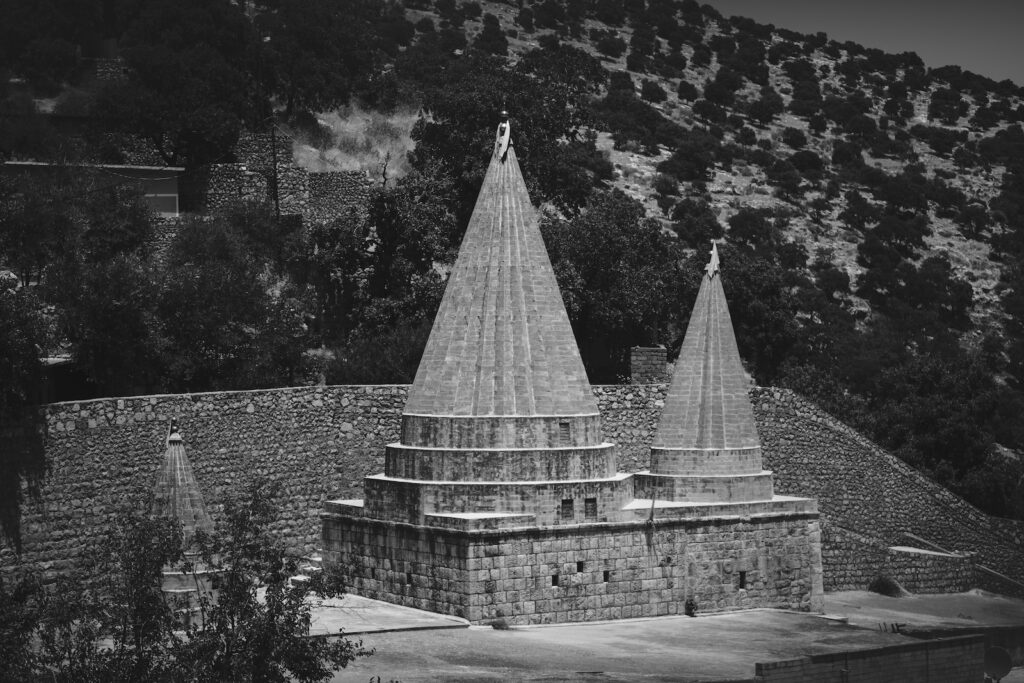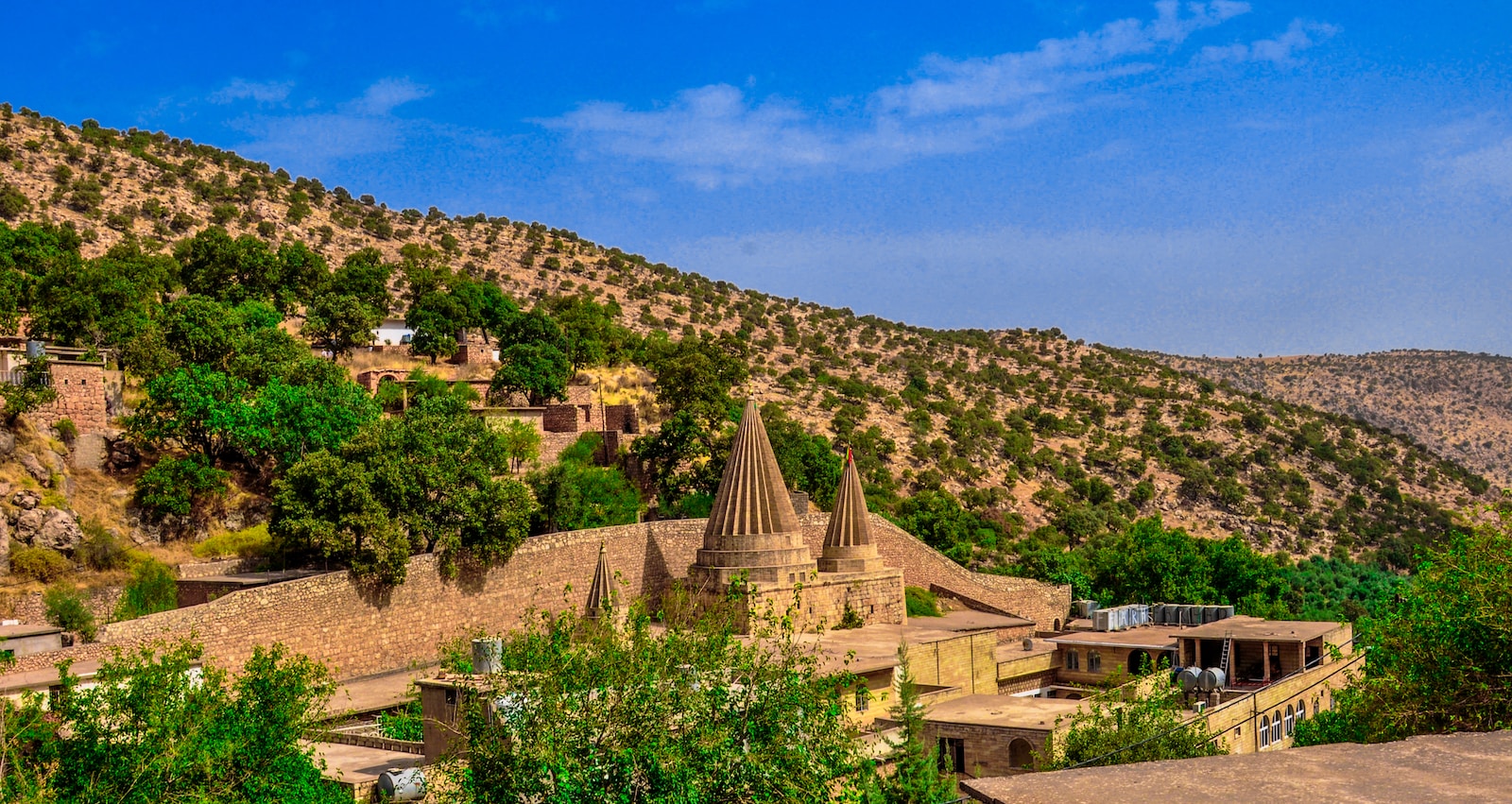Lalish, a tiny mountain village in Kurdistan with a population of just 25, is the holiest place on earth for the Yazidi people. It is to the Yazidis what Mecca is to Muslims. The Yazidi religion is known to be secretive, and Lalish is a place of pilgrimage for Yazidis from all over the world.
Who are the Yazidis?
The Yazidis are an ancient Kurdish minority faith whose members have been in flight since early August, scattered by the tempestuous advance of Islamic State (IS) insurgents into Sinjar, a majority Yazidi town in northwestern Iraq, and its surroundings. Yazidis are branded by many Christians and Muslims as devil worshipers and have often been persecuted. The sect follows the teachings of Sheik Adi, a holy man who died in 1162, and whose crypt lies in the shrine in the Lalish Valley, about 15 miles east of Mosul. The shrine’s graceful, fluted spires poke above the trees and dominate the fertile valley. Yazidis are not allowed to harm plants or animals in the valley, and pilgrims reverently wash themselves in the streams in purification rites before visiting the shrine.
The Yazidi faith is a syncretic religion that combines elements of Zoroastrianism, Islam, Christianity, and Judaism. Yazidis believe in one God who created the world and entrusted it to seven angels, the most important of whom is Melek Taus, the Peacock Angel. The Yazidis believe that Melek Taus refused to bow down to Adam, the first human, and was cast out of heaven by God. Yazidis believe that Melek Taus repented and was forgiven by God, and that he is now the intermediary between God and humanity.

Lalish: The Sacred Site
Lalish and its temples are about 4,000 years old. Its main temple was built by ancient Sumerian and other early Mesopotamian civilizations. In 1162, the temple became the tomb for Sheikh Adi Ibn Musafir, considered by Yazidis to be a “peacock angel” – one of seven holy beings to whom God entrusted the world after creation. The temple complex is the holiest place on earth for Yazidis.
When visiting Lalish, one can feel the sense of cheer and happiness in the air. Children’s laughter floats through the trees, families picnic on hilltops, and people stroll without urgency. The Yazidis believe that Lalish is where Noah’s Ark first hit dry land after the flood and that it sits in the region they believe was the garden of Eden.
The Current Situation
In 2011, the mountain shrine of Lalish was an idyllic place, with old men sitting in the sunshine in prayer and conversation, women and children using their bare feet to crush olives for oil in ancient stone troughs, and the ancient temple that sits atop the holy site surrounded by shaded courtyards. However, the situation has changed drastically since then. The Yazidis are in exile from their spiritual homeland in Iraq, which dilutes their ancient culture. The situation is very bad, and people are very afraid about Lalish. Many of the families currently sheltering there are in immediate danger and might try to flee further from the ISIS advances.
The Persecution of Yazidis
The Yazidis have been persecuted for centuries, and their religion has been misunderstood and misrepresented by many. In August 2014, the Islamic State (IS) attacked the Yazidi community in Sinjar, killing and enslaving thousands of people. The Yazidis were targeted because they were seen as infidels and devil worshipers by the IS militants. The IS militants also destroyed Yazidi shrines and temples, including the Lalish temple complex.
The persecution of the Yazidis has been condemned by the international community, and efforts have been made to provide aid and support to the Yazidi refugees. However, the situation remains dire for many Yazidis, who have been displaced from their homes and forced to live in refugee camps.
The Future of Lalish
Despite the destruction of the Lalish temple complex by the IS militants, the Yazidi people remain committed to their faith and to their sacred site. Efforts are underway to rebuild the temple complex and to restore the shrines and temples that were destroyed. The Yazidis are also working to preserve their ancient culture and traditions, which have been threatened by the violence and persecution they have faced.
The future of Lalish and the Yazidi people remains uncertain, but the resilience and determination of the Yazidis give hope that they will be able to overcome the challenges they face. Lalish will always be the heart of the Yazidi faith, a place of pilgrimage and a symbol of hope and resilience for the Yazidi people.
Conclusion I would finish by summarizing that Lalish is a sacred site for the Yazidi people, and it is a place of pilgrimage for Yazidis from all over the world. The situation in Iraq has made it difficult for Yazidis to visit Lalish, and many are in exile from their spiritual homeland. Despite this, Lalish remains a symbol of hope and faith for the Yazidi people. The persecution of the Yazidis has been condemned by the international community, and efforts have been made to provide aid and support to the Yazidi refugees. The future of Lalish and the Yazidi people remains uncertain, but the resilience and determination of the Yazidis give hope that they will be able to overcome the challenges they face.












